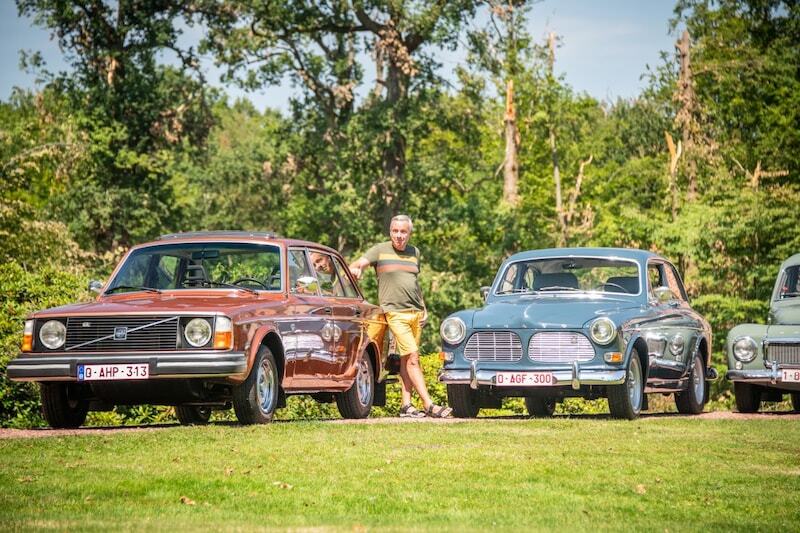
The story of Stef De Wachter is about three V’s. The first is the V of ‘collecting’, the second is that of ‘addicted’, because he is not so much addicted to collecting but to the third V. That is the V of ‘Volvo’. Stef cannot live without it.
In psychology, it is a well-known fact: things you experience in your early youth shape you for the rest of your life. Entire books have been written about it, and although they rarely mention cars, every car enthusiast can endorse the statement. You don’t have to be a psychologist for that. Volvo enthusiast Stef De Wachter from Belgium, born in 1958, is not a psychologist, but he vividly remembers his father’s car, which sparked a lifelong love for the Volvos of his youth.
Besides a beautiful XC40 for daily use, Stef has six other Volvos. The first is a PV544, the famous Hunchback, from his year of birth. He also owns an Amazon 122S from 1966 – with a wonderful story – and a stunning 1800 ES from 1972. Furthermore, he has an impeccable 244 GL from 1975 and a 343 Special from 1977.
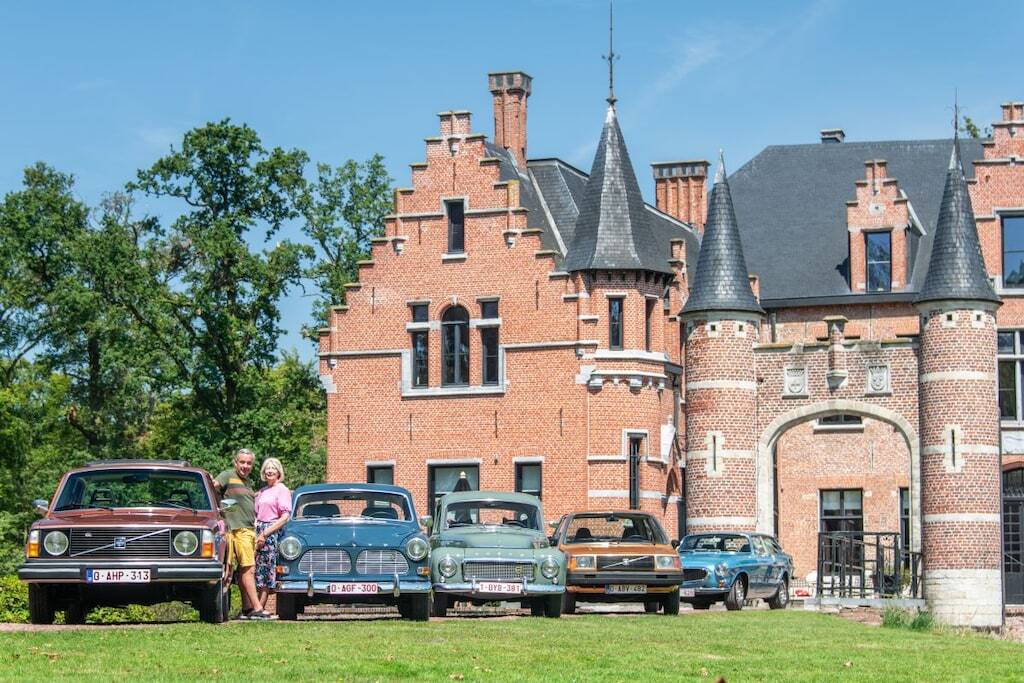
Moreover, the Fleming is still working on the restoration of a 480 from 1994 – “beautiful red, few kilometers, almost the last year of production, you can’t let that pass, can you?” – but that will probably not be a keeper. “Six Volvos might be enough,” he says with telling doubt in his voice. “Anyone interested can contact me.” Back to the beginning. We need to talk about Stef’s youth.
Familie De Wachter woonde naast Volvo-garage
The car that started it all for Stef in the early 60s was not a Volvo, but a white-and-red Glas Isar that made the family vacations to the Belgian coast – to quote Stef – “a hellish undertaking” because they had to stop continuously to quench the Glas’s enormous thirst for oil. Father De Wachter, a chief accountant by profession and therefore fundamentally cautious with large expenses, adhered to the rule that he would keep a car for as long as possible, so little Stef had to wait a long time for the Glas to make way. Until then, he had little choice but to stare longingly out the window, at the neighbors, whose grass was greener. After all, the De Wachter family lived right next to a Volvo garage.
Only in 1965 did father De Wachter give in. Whether he was as tired of his Glas as the constant pleas from Stef for a Volvo is unknown and does not matter. In that year, a Volvo finally came to the De Wachter household: a dark gray Amazon, which should have been dark blue. “My father ordered a dark blue Amazon 122S, but it took forever for that car to be delivered. Volvo delivered red Amazons, white ones, and all sorts of other colors, but no blue ones, and certainly no blue 122S. Every time I was sent to the neighbors to ask if our car had not arrived yet, and I always came back with the answer ‘no, maybe with the next delivery’. After the umpteenth time, my father was tired of waiting and settled for a dark gray one. The smell of a new Amazon has always stuck in my nose.”
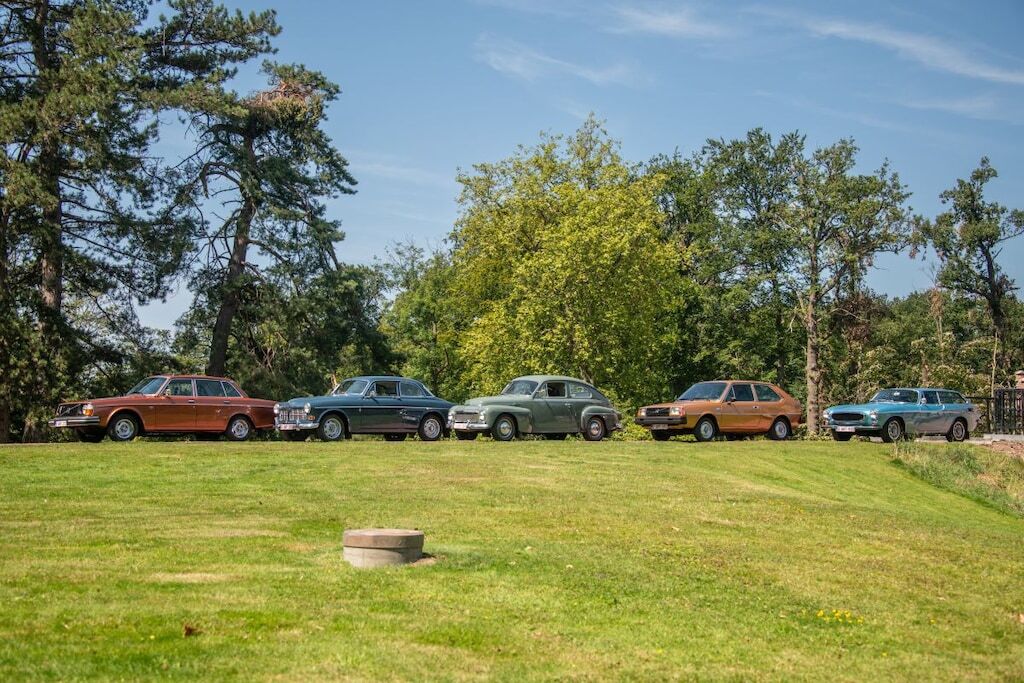
Volvo or Mercedes?
The Volvo made a deep impression and did its job for years, whistling, safely and without problems. The reliability of the Amazon thus laid the foundation for a lifelong love for Stef. After a few years, he tried to tempt his father to purchase a P1800 ES, but those plans were thwarted by the dealer, who subtly said that a P1800 ES was far too small for a family with three children. A second-hand 164E then? Well, Dad De Wachter also thought it was beautiful, but if your Amazon is only six years old, it is better to wait until the introduction of Volvo’s latest.
In 1975, the time had come. Not that the Amazon was already tired or worn out, but at the De Wachter family, the service life of a car was simply those ten years. Again, a fierce battle broke out between father and son. Stef had set his sights on the Volvo 244, which had just been introduced at that time, but his father now also felt something for a Mercedes: “He didn’t think the 244 was a success, with its ‘pouting lip’ and sloping nose,” Stef sighs. The De Wachters visited the Brussels Motor Show no less than three times, and three times Stef, his father and his brother Jan strolled back and forth between the stands of Volvo and Mercedes. Test drives followed in a 264 GL, because no 244 GL was available. “I remember it like it was yesterday. A princely car, a pleasant, warm cocoon with wonderful velvet seats. So much better than our Amazon, my father thought so too.”
But father was also impressed by the Mercedes 250 he drove that same day: “I thought it was hopelessly outdated,” says Stef. “A cold, unpleasant car with unpleasant seats and an ugly dashboard. My brother and I also thought that the Mercedes drove pretty well, but of course we didn’t want to admit that. We wanted that Volvo.” Too bad for the brothers, because Dad wanted the Mercedes and ordered one. That would always be a blemish on his reputation: “We loved father, very much, but we never forgave him for that Mercedes”.
Volvo Amazon taken over from father
But time heals all wounds, doesn’t it? That Stef had meanwhile started his career as a motorist helped with that. Initially he did that at the wheel of a dilapidated Renault 6, but soon came the offer to take over the Amazon from his father: “He didn’t get enough trade-in for it, so I could take it over for next to nothing. That’s how I came to drive up to my darling‘s house with a Volvo. That made an impression,” Stef grins. That girlfriend, An, became his wife in 1980, and let herself be carried away by Stef in the love for Volvos. Three times Stef and An would venture into another car. The first was a new Golf Diesel. That adventure ended after about three years with a smoking engine in Perpignan. Then an intensively used Volvo 144 came their way. Two Volkswagens Passat also did not live up to expectations. Again, the De Wachter family ended up with Volvo, this time with the promise of eternal loyalty.
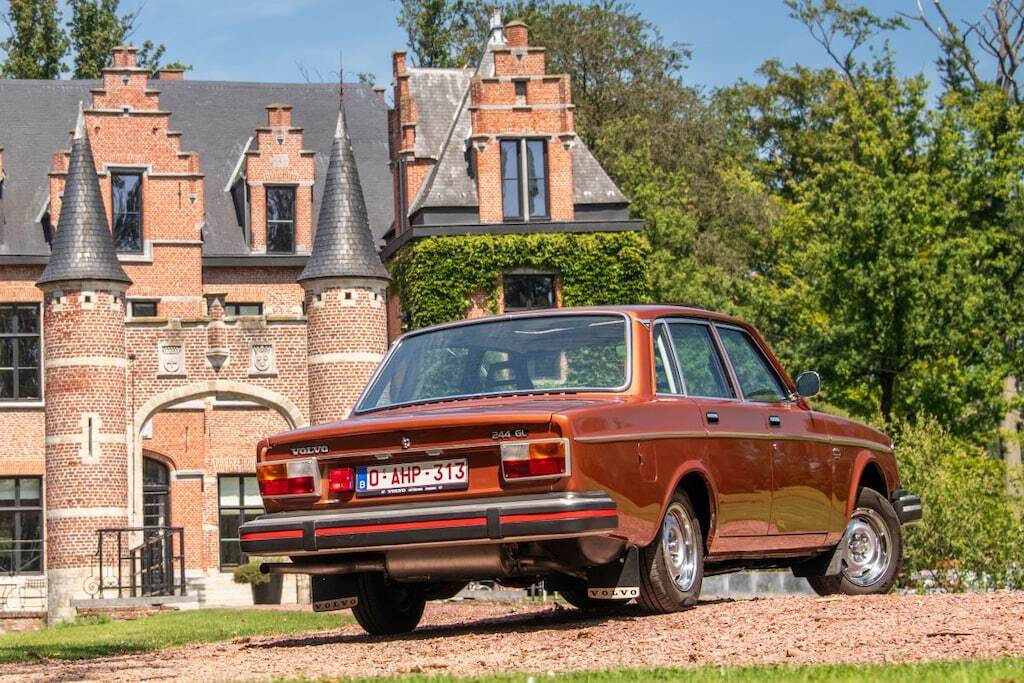
The only right thing
The introduction of the Volvo 240 series, in 1974, marked the beginning of the era of angular Volvos. Where you could still catch his predecessor, the 140, with a rounded corner here and there, the 240 only knew straight lines and sharp corners. Safety made a huge leap with the 240, but the reception remained somewhat lukewarm. Experts labeled the model as not very innovative and rather clumsy.
Except by Stef. Those three visits to the Brussels Motor Show and his fervent hope that his father would do the only right thing – buying a 244 – he has never forgotten. “The desire to one day purchase such a copper-colored 244 myself has always stayed with me and I succeeded. They are difficult to find, especially in this color and this condition, but I knew someone who kept many dozens of Volvos in a warehouse in Liège. When I got there I saw ‘my’ 244 from a distance. Everything was packed so close together that you couldn’t get to it. Actually I could only see the roof well but I was still sure that I wanted that car. It ultimately took at least ten years before I could wean the car from its owner.”
It didn’t yield a friend’s price, but Stef didn’t mind. “This car was built in Ghent, and then exported to France. It only had one owner since 1975, has only driven just 150,000 kilometers and was imported into Belgium in 2012, without ever being registered.” Stef bought it with the idea that this might be his last, major restoration project. And so he tackled the restoration on a grand scale. “The axles, wishbones and center bridge have been renewed, engine and gearbox – with overdrive – have been overhauled, the brakes are new, the fuel tank and bumpers are new, the body has been addressed and the seats have been reupholstered. The costs far exceed the value, but it’s worth it to me. I now have the car that I wanted so much as a teenager. That’s how it was meant to be.”
‘The circle is complete’
Little Stef was extremely proud when his father finally decided in 1965 to say goodbye to his old Glas and buy a Volvo. He gladly accepted that it ultimately did not become the desired dark blue, but a gray Amazon. Yet something apparently kept gnawing. Not crazy, because dark blue suits an Amazon particularly well. “The smell of that new Amazon has always stayed with me, just like the scale model that I received from the dealer at the time. When I got the chance a few years ago to buy exactly the Amazon that my father actually wanted to have, I couldn’t let that pass of course. I found him in Sweden and bid on it without having seen him in real life. Dark blue, from 1966, with light blue interior and with overdrive; you never come across them like that and that was enough for me.”
The Volvo Amazon was introduced to the world in 1956 as the successor to the PV444 and would significantly surpass the popularity of its predecessor. The design of Jan Wilsgaard, born in New York – who also designed greats such as the 200 series and the 850 – would become world famous and lure entire tribes into a Volvo. This also applies to the father of Stef De Wachter. He chose the 122S, the model in which the famous B18 engine managed to reach no less than 90 hp by mounting an extra carburetor, making the Amazon suddenly a seriously smooth car. “Now I finally have the car that my father actually wanted. The circle is complete, isn’t that beautiful?”
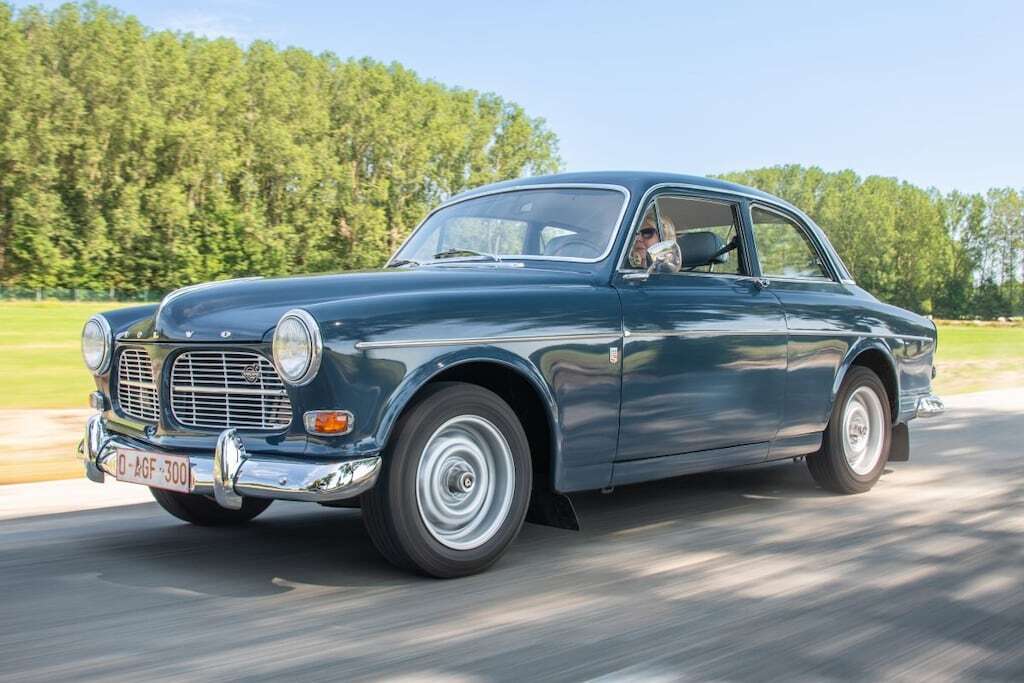
‘Our baby’
In 1981, Stef and An bought a Volvo PV544, which everyone mainly knows under his pseudonym ‘Kattenrug’ (Hunchback). That name was first given to the Volvo PV444, which came on the market in 1944, with its typical, curved roofline. The PV544 is a greatly refreshed PV444 and came on the market in 1958. Stef found a PV544 that is exactly three days younger than himself: “The car is from October 24, 1958, I was born on October 21,” he grins. “I have always dreamed of a Hunchback because you didn’t often see it in my youth. In the early 80s it was an old car, and although it was not cheap at the time, it was at least accessible. Furthermore, the Hunchback has nothing to do with my father or my youth, except that I have always found it a beautiful car. Furthermore, it is just completely mine. Or rather: ours. Even if you leave it standing still for months, it always starts and it is completely in concours condition because I restored it myself. Once I won a competition with it, then I got my weight in crates of beer. Our children got married in it, our grandchildren think it’s great and so it is. He is so beautiful, and we have had him for so long that you can safely say that this car is also a bit of our baby.”
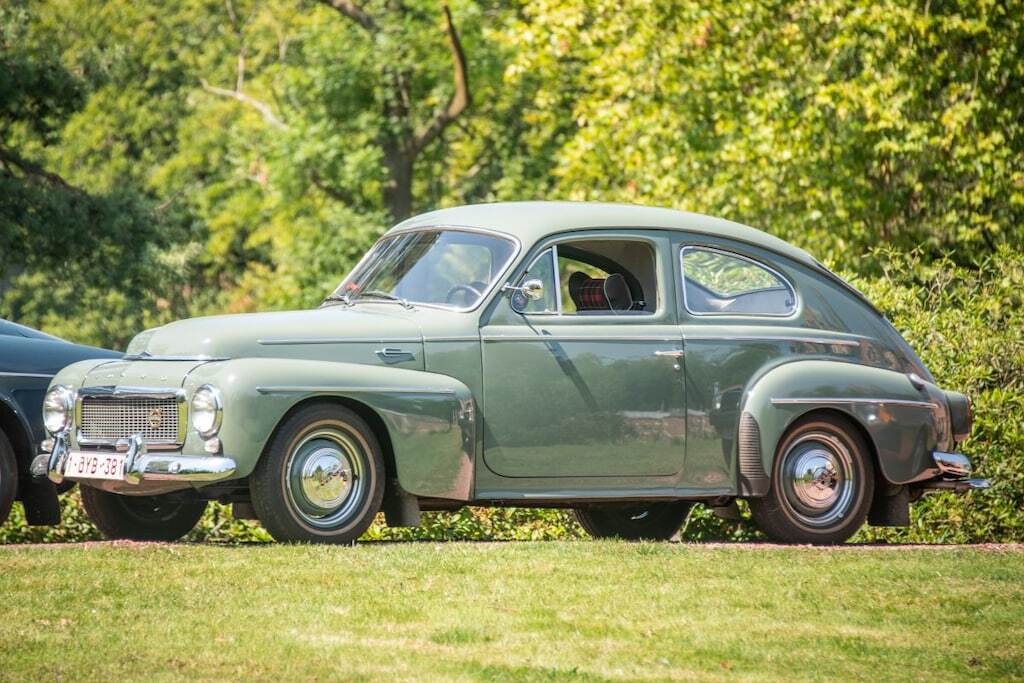
30 years in the basement
Why Stef has a Volvo P1800 ES? The answer is a frequently heard cliché: because it is a beautiful car. Perhaps the most beautiful Volvo ever, enthusiasts whisper. Stef was one of those many enthusiasts who secretly dreamed of the P1800 ES: “My father knew that and he was the one who said that I should go and buy one. So this car also has a link with my father.”
Even without that link, the story of this Volvo is remarkable, says Stef: “I came across this car at a Volvo garage in the heart of Brussels where it had been standing in a dark basement for no less than 30 years. It is an original car delivered in Belgium, which was used by its first owner from 1972 to 1983. He traded it in, and when it was not sold quickly, it ended up in the basement, where I rescued it after 30 years. It was a big project to get it into its current condition, but it was more than worth it. With this car you get thumbs up everywhere, and that doesn’t get boring quickly.”
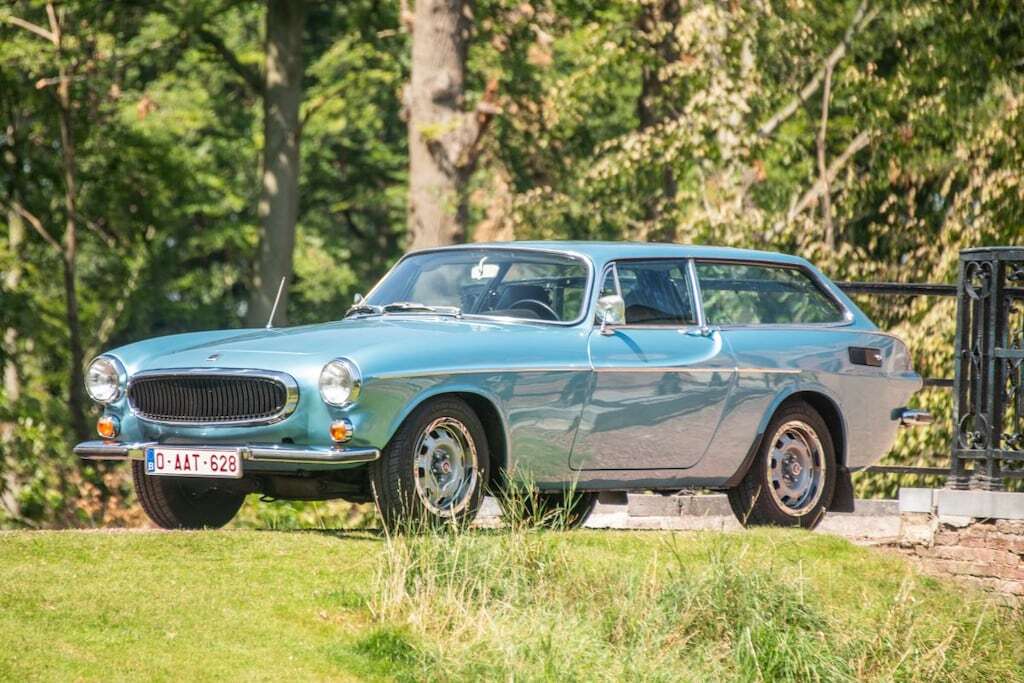
Golden carriage
Again, such a Volvo that has always stayed with Stef is the 343 DL, which came on the market barely a year after the 240 series. Not a real Volvo, because the 343 DL should actually have become the Daf 77: “But I didn’t know that then, it was a new Volvo and I immediately thought it was beautiful. During corona time I filled my hours like many car enthusiasts: by scouring the internet, looking for interesting things. On Mobile.de I typed in ‘Volvo 343’, and suddenly a project appeared on my screen. And what a one: a Special, from 1977. A rare year of construction and a rare version with bumpers on the flanks, wider rims, metallic paint, tinted glass, a Volvo radio with antenna on the roof and sporty striping. The asking price was already not high and the bid I made was quickly accepted. The seller even wanted to bring the car from Germany, in the middle of a strict lockdown, via a shortcut.”
Stef found a car that turned out to be well documented and still very original, with an odometer that was only 45,000. “But he hadn’t even been washed, and more green than brown.” Stef also touched this Volvo up from A to Z, and now he concludes with satisfaction that the cart drives particularly well, with its Variomatic gearbox. “I think that Variomatic is a wonderful invention. You Dutch people can be proud of this car, because it is very thoughtfully put together. It is my golden carriage.”
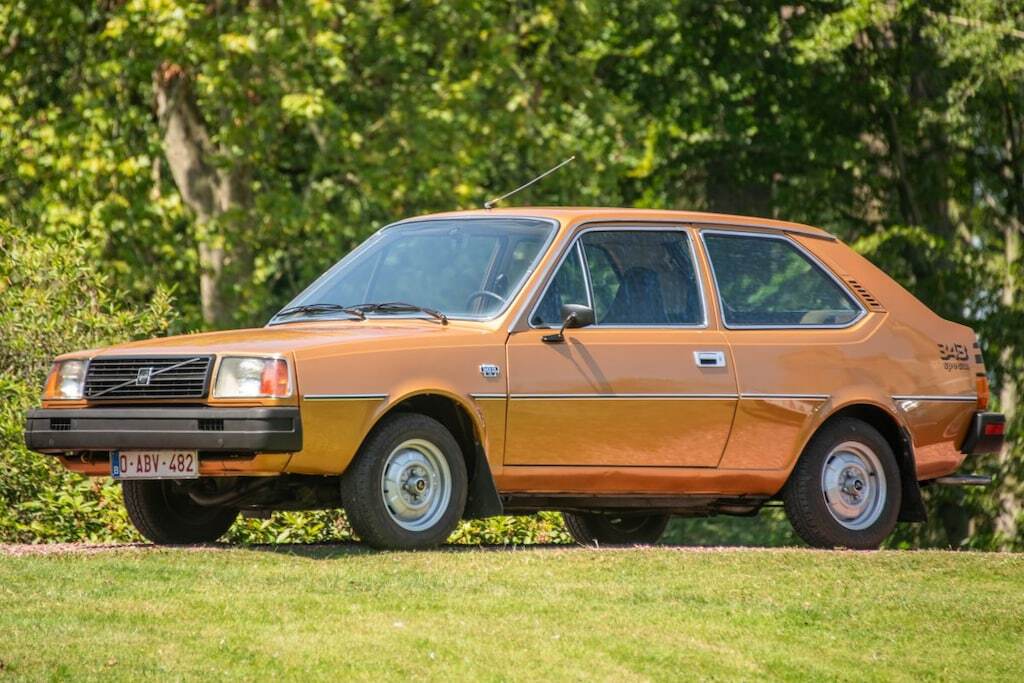
Not to be equaled or never enough?
The best thing about collecting, Stef knows, is finding something special. And give him a break, every collector dreams of a barn find, right? That dream remains unattainable for many, but not for Stef. He recently bought an almost impeccable Volvo 164E, with only 74,000 kilometers on the clock: “He was for sale in the Netherlands, and I immediately knew that it was important to be the first. So I made an appointment, for which I had to get up early. But it was worth it, I didn’t know what I was seeing. I remembered that in 1974, with my father, I went to look at a 164 that I thought was fantastic, but that he preferred to leave because the new model from Volvo was coming. History apparently repeats itself, because the 164 that I have now bought is exactly the same as the one from 1974. When I opened the door I almost fell backwards, this car is simply new. Even the spare wheel is unused. I’m just short of superlatives, you can’t even match this with the best restoration. Perhaps that is the fate of a real collector, who never has enough.” To make room for the 164, Stef sold the 244 GL – with some pain in his heart – to another collector.
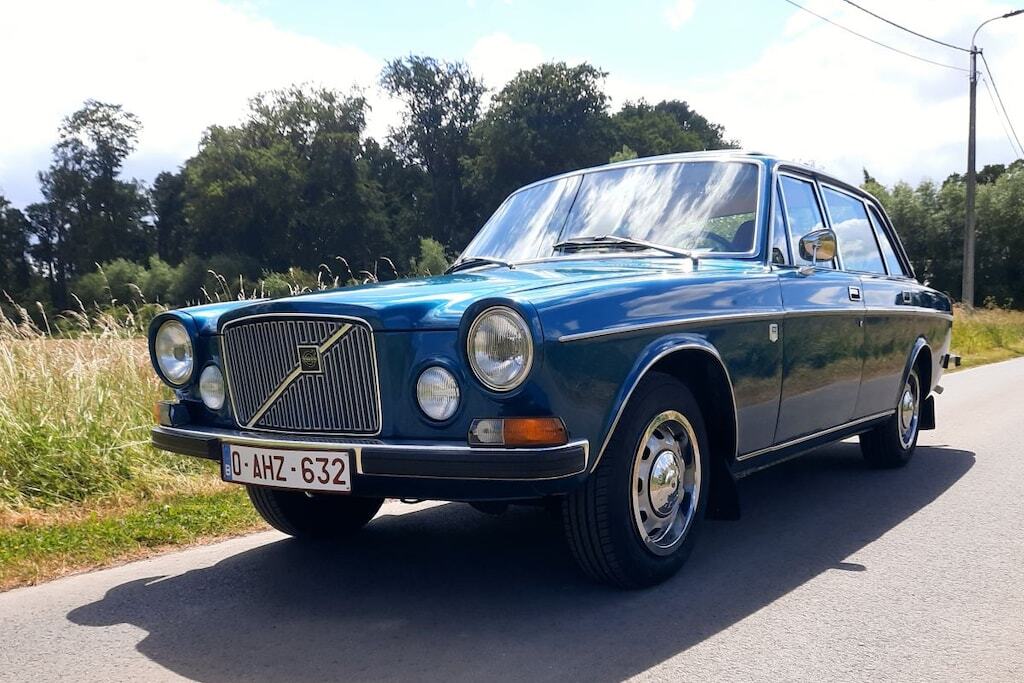
What’s next? No EX30 in any case
An and Stef make their daily kilometers with a Volvo XC40 D3, with a now quite rare diesel engine: “A superior car,” says Stef. “It is economical, comfortable and smooth. It is still built in Ghent. Fortunately, it can last for many years, because no matter how much I love Volvo, I would not know which model I should choose as a replacement for my XC40. The EX30? No thanks. From the outside I still find it reasonably beautiful, but I think the interior is, I’m very sorry, horrible. Made of, pardon, recycled junk, for which they then ask so much money. For the time being, the XC40 will stay for a while. Hopefully the next XC40 will be a hit.”